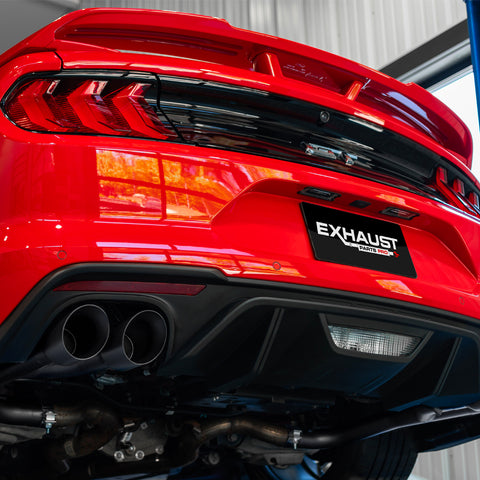News
X-Pipe Or H-Pipe? Making The Right Choice.
When it comes to enhancing the performance and sound of your vehicle's exhaust system, two popular choices are the X-pipe and H-pipe. These components are often used in performance exhaust setups to improve airflow and balance the exhaust pulses. In this article, we will delve into the differences between X-pipes and H-pipes, along with the advantages each configuration offers.
X-Pipe: Unleashing Power and Harmonious Tones
An X-pipe is designed to replace the stock mid-pipe section of an exhaust system, typically found after the headers. It derives its name from the way it looks - resembling the letter "X" when viewed from above. The primary purpose of an X-pipe is to merge and equalize the exhaust gases from each bank of the engine.
Advantages of X-Pipe:
1. Improved Exhaust Flow: The X-shaped crossover section in the X-pipe allows exhaust gases to flow more freely between the two sides of the engine, reducing backpressure and improving exhaust scavenging. This smoother flow can enhance horsepower and torque throughout the RPM range.
2. Balanced Exhaust Pulses: By merging the exhaust pulses from each bank of cylinders, an X-pipe helps to equalize the pressure and timing of the exhaust gases. This results in a smoother and more balanced power delivery across all cylinders, promoting better engine efficiency.
3. Enhanced Sound: One of the most appealing aspects of an X-pipe is the distinctive exhaust note it produces. The merging of exhaust pulses creates a more aggressive and race-inspired sound, often characterized by a high-pitched shriek at higher RPMs. This makes the X-pipe a popular choice for enthusiasts seeking an exhilarating auditory experience.
H-Pipe: Harnessing Power and Achieving Classic Tones
Similar to the X-pipe, an H-pipe is designed to replace the stock mid-pipe in an exhaust system. However, instead of an X-shaped crossover, the H-pipe features a configuration resembling the letter "H."
Advantages of H-Pipe:
1. Increased Low-End Torque: Compared to an X-pipe, an H-pipe typically offers a slight advantage in low-end torque. The H-shaped design creates a scavenging effect, balancing exhaust pulses and enhancing low-end power. This characteristic makes the H-pipe a popular choice for muscle cars and vehicles that prioritize low-end grunt.
2. Classic Muscle Car Sound: The H-pipe is renowned for producing a deep, rumbling exhaust note, which is often associated with classic muscle cars. The design helps to mellow out the exhaust tone, offering a more traditional and refined sound. This makes the H-pipe an excellent choice for those who prefer a deep and throaty exhaust note without excessive rasp or drone.
3. Cost-Effective Option: In general, H-pipes tend to be more affordable compared to X-pipes. This affordability factor makes them an attractive option for budget-conscious enthusiasts who still want to enhance their vehicle's performance and sound.
Conclusion:
When it comes to choosing between an X-pipe and H-pipe, it ultimately depends on your specific needs and preferences. The X-pipe excels in maximizing high-RPM power, offering a race-inspired exhaust note. On the other hand, the H-pipe prioritizes low-end torque, producing a classic muscle car sound. Both options provide advantages in terms of performance and sound enhancement, so it's essential to consider your vehicle type, driving style, and desired exhaust note before making a decision. Whichever you choose, upgrading to an X-pipe or H-pipe can transform your vehicle's exhaust system, elevating both its performance and auditory appeal.

























